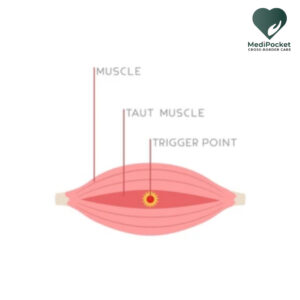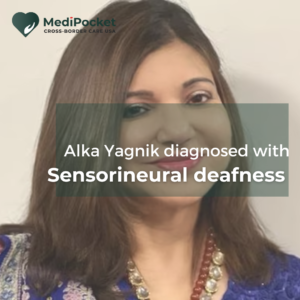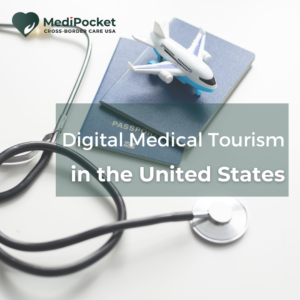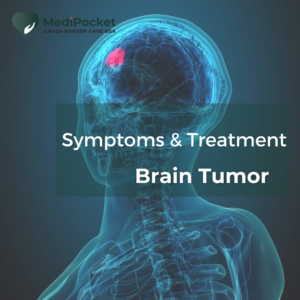Myofascial pain syndrome (MPS) is a chronic pain illness that affects the muscles and the fascia, or connective tissue that surrounds them. The presence of trigger points, which are regions of tight, painful knots in the muscles that can induce pain and discomfort in other parts of the body, distinguishes it.
MPS can affect any muscle group, but the neck, shoulders, back, and hips are the most typically affected. A multitude of reasons can contribute to it, including muscular overuse, injury, bad posture, stress, and certain medical disorders.
In certain circumstances, medicines or anaesthetic injections may be utilised to relieve pain in specific trigger points. In severe situations, surgery may be required to remove trigger points or to relieve pain.
What is fascia?
Fascia is a thin layer of connective tissue that surrounds and supports the body’s muscles, bones, organs, and other structures. It is a complex network of collagen and elastin fibres that gives the body structure and stability while also enabling flexibility and mobility.
Fascia is found all over the body, producing a continuous web that links various sections of the body while also providing support and protection. It aids in the distribution of mechanical stresses and tension throughout the body, allowing for coordinated movement and effective muscle and joint function.
Fascia, in addition to its structural purpose, is crucial in the immunological and neurological systems of the body. It has a high concentration of nerve receptors and sensory nerves, making it extremely sensitive to touch and pressure. This sensitivity enables the body to recognize and adapt to changes in its surroundings, which aids in the maintenance of general health and well-being.
While fascia is a robust and flexible tissue, it can be injured or constricted as a result of injury, bad posture, stress, or other circumstances. This can result in discomfort, stiffness, and decreased movement, as well as the development of certain medical disorders. Maintaining fascia health and flexibility by frequent stretching and mobility is thus a key part of total physical health and well-being.
Causes of Myofascial pain syndrome
A multitude of causes can contribute to myofascial pain syndrome (MPS), including:
- Muscle overuse:MPS can be caused by repetitive motions or activities that strain the muscles.
- Bad posture: Sitting or standing in the same position for long periods of time can cause muscular tension and trigger points.
- Stress: Muscle tightness and trigger points can be caused by emotional or psychological stress.
- Injury: Mayofascial pain syndrome can be caused by direct damage to the muscle or surrounding tissues.
- Medical conditions: MPS can be caused by medical disorders such as fibromyalgia, osteoarthritis, rheumatoid arthritis, and chronic fatigue syndrome.
- Infections: MPS can be caused by infections such as Lyme disease or viral infections.
- Nutritional deficiency: Deficiencies in vitamins and minerals, such as vitamin D or magnesium, can cause muscular tension and trigger points.
- Sleep disturbances: Muscle tension and trigger points can be exacerbated by a lack of sleep or poor quality sleep.
Symptoms
Among the signs of MPS are:
- Localised pain or discomfort in a single muscle or set of muscles is the most typical sign of MPS. The pain might be subtle, agonising, or acute, and it could be accompanied by muscular stiffness or tightness.
- Referred pain occurs when trigger points in one muscle create pain in other parts of the body. Trigger points in the neck muscles, for example, might induce headaches or discomfort in the shoulders or arms.
- Trigger points can induce muscular weakness, as well as difficulties with coordination and movement.
- Stiff muscles and trigger points can impede mobility and reduce the range of motion in afflicted joints.
- Persistent pain and muscular stress can lead to weariness and difficulties doing everyday tasks.
- MPS-related pain and discomfort can disrupt sleep and lead to insomnia or other sleep problems.
- Trigger points are usually uncomfortable or unpleasant to the touch.
Where do Myofascial pain syndrome occur?
MPS may affect every muscle in the body, although it most typically affects the muscles of the neck, shoulders, back, hips, and thighs. Trigger points can form in any overworked, strained, or damaged muscle, causing pain and discomfort in the surrounding areas.
MPS may occur in a variety of places, including:
- Neck and shoulders: Trigger points in the neck and shoulders muscles can cause discomfort and stiffness in the neck, shoulders, and upper back.
- Lower back: MPS can produce pain and discomfort in the muscles of the lower back, which can extend into the hips, buttocks, and legs.
- Hips and thighs: Trigger points in the hip and thigh muscles can cause pain and discomfort.
- Head and face: Trigger points in the head and face muscles can induce headaches, jaw discomfort, and facial pain.
Depending on the underlying reasons and contributing variables, MPS can also arise in other parts of the body, such as the arms, hands, and feet.
Diagnosis
A physical exam and medical history review by a healthcare practitioner, such as a doctor or physical therapist, are commonly used to diagnose myofascial pain syndrome (MPS). The healthcare practitioner will check for regions of sensitivity and tightness in the muscles during the exam and may ask the patient to do particular movements or activities to measure their range of motion and level of discomfort.
Besides from a physical exam, the healthcare practitioner may employ additional diagnostic tests to confirm the diagnosis of MPS, such as:
- Imaging tests: such as X-rays, MRIs, and CT scans, may be conducted to rule out other illnesses that produce similar symptoms, such as arthritis or herniated discs.
- Electromyography (EMG): EMG uses tiny needles to assess electrical activity in the muscles and can assist pinpoint regions of muscular tension and trigger points.
- Trigger point injections: In some situations, the healthcare expert may inject a tiny quantity of anaesthetic or anti-inflammatory medicine directly into the trigger point to confirm the diagnosis and give brief pain relief.
The information acquired from the physical exam and diagnostic tests will be used by the healthcare professional to create a specific treatment plan for the patient, which may involve a combination of drugs, physical therapy, and lifestyle changes. The objective of therapy is to minimise pain and suffering, improve range of motion and function, and avoid recurrent MPS flare-ups.
Treatment
Myofascial pain syndrome (MPS) is often treated with a mix of medicines, physical therapy, and lifestyle changes. The treatment objective is to alleviate pain and suffering, enhance range of motion and function, and avoid recurrent MPS flare-ups. Some typical MPS therapies include:
Medications: To assist control pain and inflammation, over-the-counter pain medications such as acetaminophen or ibuprofen may be prescribed. To give extra relief, the healthcare professional may prescribe stronger pain drugs or muscle relaxants in rare circumstances.
Physical therapy: is a key element of MPS treatment because it may help increase range of motion, strengthen muscles, and relieve pain and stress. Massage, stretching, and range-of-motion exercises may be used by the physical therapist.
Trigger point injections: In some situations, a little quantity of anaesthetic or anti-inflammatory medicine may be injected directly into the trigger point to offer brief pain relief.
Heat therapy: Using heat to ease muscle tension and discomfort in the afflicted region. This can be accomplished by utilizing a heating pad, a warm compress, or a hot shower.
Lifestyle modifications: Modifications to one’s lifestyle can aid in the management of MPS symptoms and the prevention of flare-ups. Improved posture, stress reduction strategies, regular exercise, and adequate sleep are some examples.
Alternative therapies: Acupuncture, biofeedback, and chiropractic therapy may provide help for some persons with MPS.
The chapter closes with all of the details of this condition that affects our muscles and fascia. Most people are ignorant of the symptoms and may misdiagnose myofascial discomfort as something else. It is usually recommended to acquire some understanding regarding uncommon or rare diseases in order to avoid any mishaps in the future.
The United States has consistently set new standards in medicine and research. Several individuals choose to fly all the way to America to get treated for any sickness. But, for those who aspire to obtain such sophisticated therapy from the United States but are unable to do so, we offer a solution.
MediPocket World virtually brings top healthcare from the United States to the people of India. Now, for the first time, patients from India can talk to US specialist and consult them easily. MediPocket world offers services of critical care, second opinion and clinical trial, all from the US. subscribe and get to have a chance to talk to board certified American doctors now.













